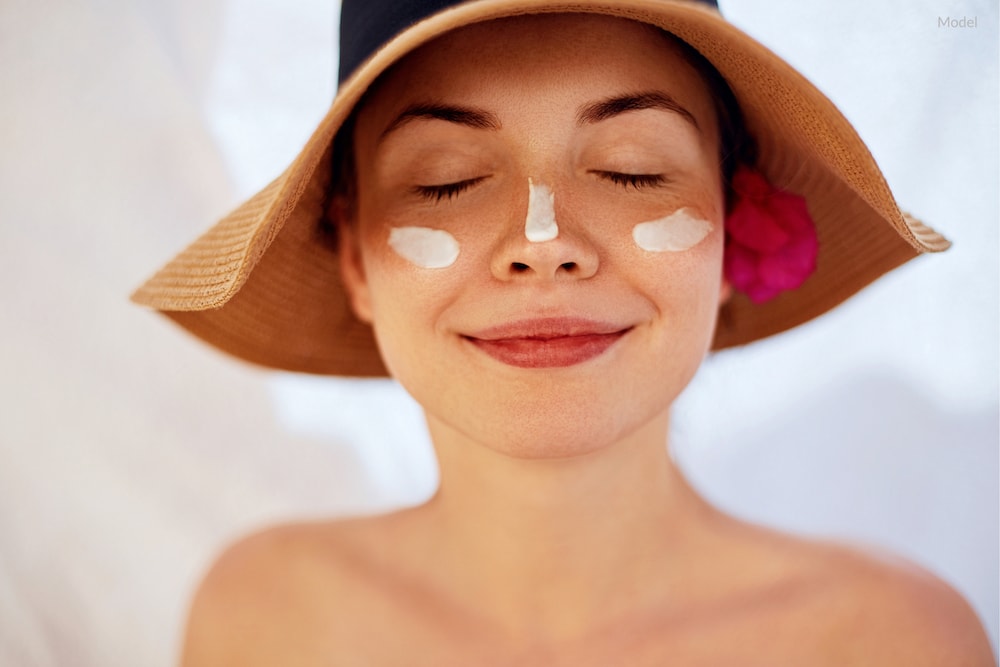Posted in SoME™ Skincare
2 Minute Read:
Now that summer is finally here, it’s time to head out into the sun and soak up some rays. But as you well know, sun damage is one of the leading causes of skin deterioration. And with changing climates, your patients are only becoming more vulnerable to sunburn and problems related to sun damage.

What Are the Types of Sun Damage?
The most immediate evidence of too much sun is a sunburn, that painful condition that most people experience many times in their lives. Even after the immediate discomfort fades, sunburn can cause lasting damage. In addition to painful redness, blistering, and peeling, repeated burns can have invisible consequences that develop as your patients age.
Here are a few of the most common skin problems that can result from too much time in the sun:
Dark Spots
The melanin in the skin can be impacted by sun exposure. This can result in a dark spot (usually on the face and hands).
Wrinkles
The effects of a lifetime in the sun often show as leathery, wrinkled skin. For some, it is an occupational hazard, but prolonged sun exposure causes the skin to thicken in an attempt to protect itself.
Skin Cancers
The biggest problem with overexposure to the sun is not an aesthetic one. Skin cancers of all kinds are on the rise. While some types, like basal cell carcinoma, are more of a nuisance than anything else, some, like melanoma, can be fatal.
How Should My Patients Protect Themselves From the Sun?
The most obvious way to avoid sun damage is to avoid direct sun as much as possible. Inform your patients to stick to the shade, and use physical barriers, such as umbrellas, hats, sunglasses, or UV protective clothing between them and the sun rays.
The following steps can and should also be taken:
- Avoid the sun completely between 11 am and 3 pm—this is when damaging UV rays are at their most intense.
- Apply sunscreen religiously and thoroughly 15 minutes before sun exposure. Inform your patients to re-apply if they are going to be outside for any length of time. Tell them to use a water-resistant sports formulation if they are active outdoors. And the sun protection factor (SPF) of your sunscreen—it should be at least higher than 30, up to 60 if you have fair skin. There are total sunblock products on the market too.
- See a dermatologist regularly to check for damage and skin irregularities that may indicate skin cancer.
Interested in Learning More?
Since wrinkles and sun damage are the primary reasons patients seek out cosmetic solutions, sun preparation is essential. If your patients are coming in with significant sun damage, consider suggesting SoME® Skincare as maintenance therapy for your treatments.
If you are interested in offering autologous skincare to your patients and would like to learn more about your options, contact one of Aesthetics Biomedical’s local sales representatives, by filling out a contact form.
